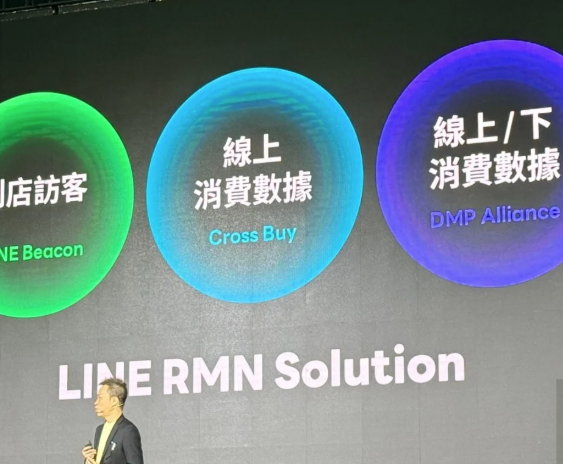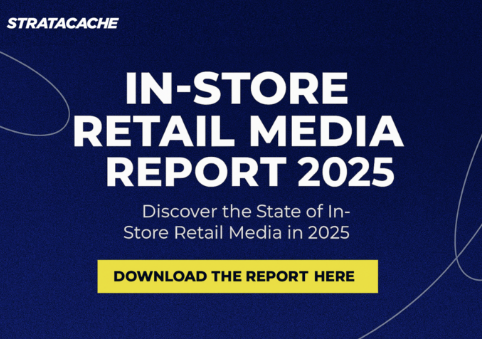A Conversation with Chris McLelland, Director of Business Development, EMEA, Walkbase.
From his perch on the cutting-edge of in-store data measurement, Chris McLelland sees limitless potential in data clean rooms. “In a world where data is the new currency, clean rooms are unlocking unprecedented opportunities for marketers to understand exactly what drives results and optimize accordingly,” he says.
Retail media ad professionals seem to agree: Nearly two-thirds (66%) of them have adopted data clean rooms to navigate privacy laws and signal loss, according to the IAB. But despite this rapid adoption, these sophisticated platforms remain poorly understood. The question lingers: How “clean” are data clean rooms? Is shoppers’ personal data really protected?
A seasoned expert in analytics and retail media, McLelland is perfectly poised to help answer those questions. In July, he joined Walkbase, a global leader in privacy-focused, in-store data measurement solutions and a member of the STRATACACHE family, as director of business development, EMEA.
Recently we spoke with McLelland about how data clean rooms actually work, how they safeguard consumer privacy while allowing retailers and brands to tap deeper customer insights, and how they can bring value to retailers, marketers and shoppers across the retail media landscape.
The following interview has been lightly edited for clarity and length.
Let’s start with the basics. What exactly is a data clean room?
Think of data clean rooms as the next generation of data platforms—the 2.0 version, if you will. They’re secure warehouses that allow multiple parties to collaborate with their data while maintaining privacy. The key difference from traditional customer data platforms (CDPs) is scale and collaboration. CDPs are great for internal activation using your known customer data, and clean rooms extend that capability by allowing you to combine datasets with partners to create a richer, more complex view of customers.
How do these platforms maintain privacy while enabling data sharing?
This is crucial to understand: a data clean room is not a route around data privacy—it’s a bunker to hold private data securely. Before any data enters the clean room, it must be properly consented and encrypted to shield personally identifiable information (PII). The responsibility for collecting data correctly sits outside the clean room with the data collector—the retailer or brand. Once inside, all PII is removed, so when multiple parties access the platform, they’re only seeing anonymized metrics and insights, never individual customer information.
What’s the strategic value for retailers and brands collaborating in these environments?
The first is scale. The clean room provides scalable, rich audiences, which can be sold and activated across multiple channels, measured against a single source of truth. If I’m a retailer, my CDP only contains data from customers who’ve directly engaged with me. For example when I combine my data with a brand’s customer data in a clean room, suddenly we both gain aggregated insights into each other’s audiences. Take Tesco and Motorola , for example—a customer might buy a Motorola phone directly from Motorola or from Tesco. Neither knows about the other’s transaction, but together in a clean room, they get the complete picture.
The second is monetization. Retailers can now sell accurate, enriched data about prospective audiences to brands. This in itself can improve relationships between retailers and brands. Retailers keep hold of their data while brands gain actionable insights on their shoppers.
The third is advanced measurement—brands can target audiences through one retailer but measure results at another. A sun cream brand might target a travel company’s customers but measure sales at grocery stores where the actual purchases happen.
How does in-store technology like Walkbase’s millimeter wave sensors contribute to this ecosystem?
We’re essentially enabling retailers to analyze their physical real estate the same way they analyze their online properties. Historically, retailers only knew what happened in-store at the till. Everything between the entrance and checkout was a black box.
Our technology captures browsing behavior—which aisles customers spend time in, what products they consider but don’t buy, how they respond to in-store media. This browse data is incredibly valuable. If you’re spending time in the organic food aisle but never buying organic products, that signals interest. When tied to loyalty data and fed into clean rooms, it creates a much richer customer profile that can power more effective personalization—such as leading an advertiser to offer vouchers or incentives to encourage the shopper to purchase the organic produce they’re interested in.
Can you actually measure if someone saw an in-store ad and then purchased the advertised product?
What’s remarkable, and even revolutionary for in-store, is that we can move from correlation to causation through careful measurement design. We don’t use facial recognition for privacy reasons, but we can measure how many people were in the vicinity of the media and had the opportunity to view it. This “likelihood to see” metric is a key data point mentioned by the IAB in their work on bringing universal standards and definitions to in-store media.
By running matched marketing testing over time—comparing sales in stores with media versus without, or testing different creative approaches—we can measure sales lift and determine the incremental impact of campaigns. It’s not about knowing which specific customers were influenced, but proving that the campaign drove measurable increases in sales and improvements to customer lifetime value.
What role does customer consent play in all of this?
Consent is absolutely fundamental and must be explicit—meaning there’s no shadow of doubt that customers meant to give permission. In Europe, GDPR requires that data collection be auditable and privacy-by-design. When customers join loyalty programs, retailers must clearly explain how their data will be used, including for retail media purposes and sharing with brand partners.
The beautiful thing about clean rooms is they align well with privacy regulations because there’s no PII inside them. The responsibility remains on proper data collection before it enters the system.
AI is evolving at breakneck speed. How will it impact how retailers and brands leverage data clean rooms?
As I see it, AI’s role will be transformative across three areas. First, actionable insights—surfacing insights quicker while maintaining privacy at scale. I’ve seen virtual AI personas built on the aggregated data within clean rooms that create a customer representative marketers can literally talk to, asking how best to address their audience.
Second is real-time content curation. AI can generate contextual content in-the-moment based on real-time data rather than relying on pre-loaded banks. Third, when we achieve transparency in measurement and incrementality, AI can close the optimization loop—real-time data providing real-time insights, building real-time content, testing real-time strategy, and optimizing performance continuously.
What about the customer experience? With the enhanced ad personalization that data clean rooms enable, how do you avoid overwhelming shoppers?
This is absolutely critical. If we only think about monetization and ignore the customer experience, we’ll annoy consumers, leading them to opt out and reducing our data scale—a vicious cycle.
Technology enables us to be more relevant and less disruptive. Instead of showing generic ads, we can serve contextual content based on weather, time of day, or stock levels, and eventually personalized content for consenting customers. The goal is making the shopping experience more helpful, not more invasive. Better customer experience must be at the heart of every strategy.













